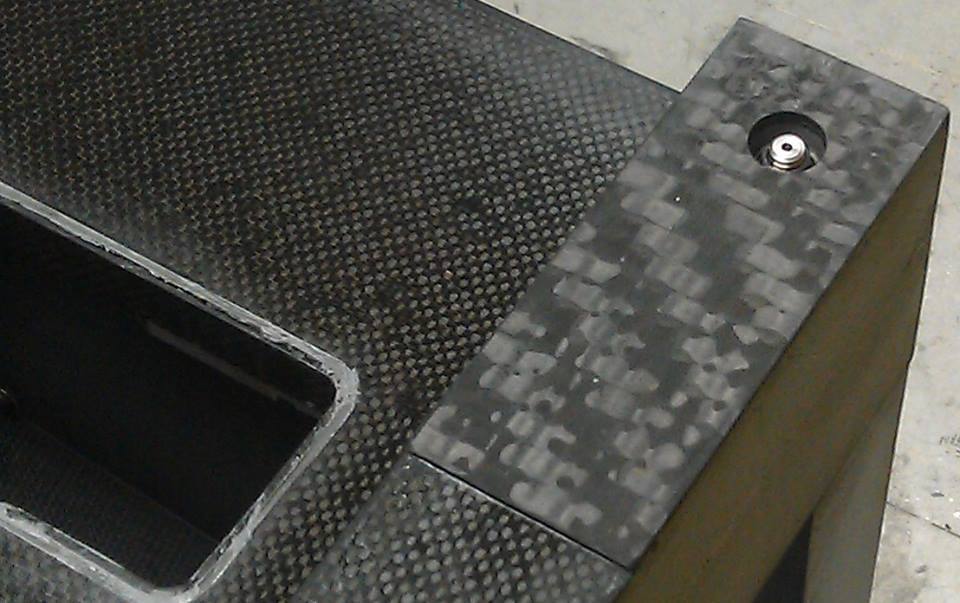Back in black

Kieron Salter, managing director of KWSP, an engineering solutions business at the forefront of disruptive engineering thinking, takes a look at lightweight materials in automotive and asks what we are likely to see more of in the future.
Across the automotive sector, we are seeing the increasing proliferation of composites materials. And, as the universal process of lightweighting continues apace, innovation in lighter, stronger materials, as well as more ‘intelligent’, more efficient forms of manufacturing, accelerates.
In terms of the main drivers when it comes to developing automotive materials, the focus is on cost, efficiency and weight reduction, meaning lightweighting is core to contemporary industry thinking. Indeed, we’re seeing an increased focus on whole life costing models, which may use what appear to be more expensive composite materials but the overall lifecycle cost of the vehicle will be lower, when tooling costs are also considered.

Much of the adoption of new materials innovation comes from emerging vehicle manufacturers, who are embracing change. Unlike some of their established competition, they don’t have the significant capital investment in traditional production infrastructure and are therefore better placed to explore new manufacturing techniques. The niche vehicle sector is also very proactive in this development.
As noted, one of the key advantages of using composites is the ability to produce small batches of product, without the need for expensive tooling. Such capability opens up a new world of mass customisation in car making. Processes such as AM, are central enablers to this ethos. Indeed, AM can be used for the manufacture of finished parts as well as tooling. Vitally, this also allows for the manufacturing of low volumes of parts, which could never have been achieved profitably using established traditional manufacturing methods.
Yet, there are obstacles to be overcome and many of the challenges of using new materials and processes concern their safety and quality. Issues such as corrosion resistance, fatigue, assembly constraints and recyclability all require rigorous performance testing and investigation, leading to eventual adoption.
Open to all possibilities
At KWSP, we are endeavouring to embrace new processes and new materials. For example, we have been developing an internal R&D project called ToPCaT, supported by Innovate UK. This is a thermoplastic composite-based modular chassis platform that is currently at the proof of concept stage. It is aimed at a wide range of potential end users, including traditional automotive and transport sectors such as goods vehicles, but also the new and developing transport sectors and autonomous vehicles.

From our perspective, the hot areas for new materials are the chassis and body in white. From an AM point of view, it’s both those areas, as well as powertrain and other structural components, where lightweighting is a challenge. So, any components within a vehicle that were traditionally manufactured are coming under scrutiny to see if new materials can provide the same level of performance with less weight. For example, one can see the increasing proliferation of the use of carbon in components such as wheel rims, where the UK is leading the field in terms of research and development into ‘affordable’ carbon fibre wheels, with the National Composites Centre welcoming new members producing said wheels.
One of the key challenges and barriers to innovation in this area is validation; the real-world testing of new materials. So, while a new composite solution may perform well in the lab, it may respond differently at sub-zero temperatures, when tested on winter roads, for example.
In addition, trying to change existing processes may prove difficult; one can’t just take a part and replace it with a 3D-printed component because you may have to change the whole system to make the value of the 3D-printed part work. However, for developing a new product, there is much less risk in introducing these new processes and reaping the benefits.
The vehicles of tomorrow
Looking to the vehicles of tomorrow, there aren’t many materials that won’t change, but a couple that are likely to remain in the automotive toolbox are glass and rubber! We will still have the need for a transparent material and the distinct properties of rubber make it an obvious choice for tyres. Apart from that, it’s pretty much ‘open season’ for other materials.
All chassis structures can change, whether it’s carbon composites or metal composites. And the manufacturing process to additives and nanotechnology might allow us to improve properties of certain materials seen as not suitable beforehand. So, I don’t think there’s much you won’t see changing. You’re very unlikely to see major changes in the next five to ten years but beyond that there will be many more hybrid materials produced by AM processes. Materials that heal themselves, materials that change shape to suit their environment and materials with diagnostic capabilities, for example, are all likely to be seen on vehicles within the next decade.
So, one can see that the automotive sector is very much at a tipping point. Over the next 10 years, it may be that we are about to see as much change as we have witnessed in the last century. Throughout all this tumult, the one constant will be the need for safe, cost-effective and sustainable vehicles.









